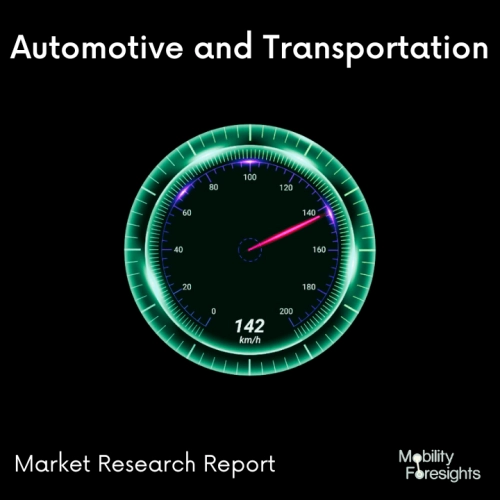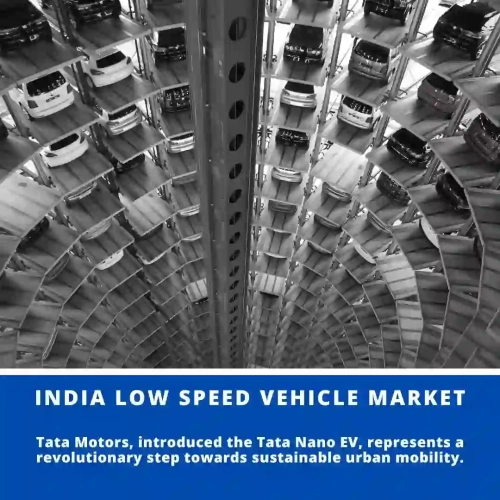
- Get in Touch with Us

Last Updated: Apr 25, 2025 | Study Period: 2024-2030
The Indian low-speed vehicle (LSV) market is poised for significant growth in the coming years, driven by several factors. Rising fuel costs and growing emphasis on eco-friendly transportation are making electric LSVs an attractive option.Urbanisation and congested roads are creating demand for compact, manoeuvrable vehicles for short-distance travel within cities and gated communities. LSVs fit the bill perfectly, offering easy parking and navigating narrow streets.
Government initiatives promoting electric vehicles (EVs) can further accelerate LSV adoption. Subsidies, tax benefits, and charging infrastructure development can incentivize manufacturers and consumers alike.The market is expected to see a rise in electric LSVs compared to traditional fuel-powered ones. This is due to increasing environmental concerns and the government's push for EVs.
While golf carts have dominated the LSV market so far, expect a rise in LSVs for personal use and commercial applications. Compact electric LSVs for daily commutes or last-mile deliveries are a promising segment.Technological advancements will play a key role. Advancements in battery technology can lead to longer ranges and shorter charging times, making LSVs even more practical.
Safety regulations for LSVs are still evolving in India. Clear guidelines and certifications are needed to ensure passenger safety and responsible use on public roads.The success of the LSV market hinges on creating a robust charging infrastructure. Easy access to charging stations will be crucial for widespread adoption, especially in urban areas.
Collaboration between government, manufacturers, and urban developers is essential. This can help create designated lanes or zones for LSVs, improving traffic flow and safety.The Indian LSV market holds immense potential. With the right support system and evolving technology, LSVs can transform short-distance transportation in India, making it cleaner, greener, and more convenient.
A Low Speed Vehicle (LSV) is a category of motorised vehicle designed for operation at speeds typically ranging from 20 to 25 miles per hour (32 to 40 kilometres per hour). These vehicles are primarily used for short-distance transportation in urban and suburban areas, offering a cost-effective and environmentally friendly alternative to traditional automobiles. LSVs are usually electrically powered, although some may utilise alternative fuels like compressed natural gas.
There are several types of LSVs, including electric golf carts, neighbourhood electric vehicles (NEVs), and utility task vehicles (UTVs). Electric golf carts are commonly used for recreational purposes on golf courses, while NEVs are compact electric vehicles designed for urban commuting and short-distance travel. UTVs, on the other hand, are multipurpose vehicles used for tasks such as maintenance, landscaping, and light cargo transportation.
The benefits of LSVs include reduced carbon emissions, lower operating costs compared to conventional vehicles, and increased accessibility in densely populated urban areas. Additionally, LSVs contribute to alleviating traffic congestion and can serve as effective last-mile transportation solutions. However, they also pose certain risks and challenges, including limited range and speed, which may restrict their use for longer journeys or on highways.
Safety concerns regarding the vulnerability of LSV occupants in the event of collisions with larger vehicles also need to be addressed through adequate regulations and safety standards. Moreover, the development of infrastructure such as charging stations and designated lanes for LSVs is essential to support their widespread adoption and integration into existing transportation systems.

The India Low Speed Vehicle Market accounted for $XX Billion in 2023 and is anticipated to reach $XX Billion by 2030, registering a CAGR of XX% from 2024 to 2030.

Ather Energy, introduced theAther 450X, boasts advanced specifications designed to meet the evolving needs of urban commuters. Equipped with a powerful 6 kW PMS motor, the Ather 450X offers brisk acceleration and a top speed of 80 km/h, making it suitable for city streets and suburban roads alike. Its high-capacity lithium-ion battery pack provides an impressive range of up to 116 kilometres on a single charge, ensuring users can complete their daily journeys with ease.
Tata Motors, introduced theTata Nano EV, represents a revolutionary step towards sustainable urban mobility. Equipped with a compact yet efficient electric powertrain, the Nano EV delivers reliable performance tailored for city commuting. Its electric motor delivers a peak power output of 25 kW, providing ample acceleration for navigating congested urban streets with ease.
Bajaj Auto, introduced theBajaj Qute Electric, redefines urban mobility with its compact dimensions and eco-friendly electric powertrain. Designed to navigate crowded city streets with ease, the Bajaj Qute Electric features a lightweight yet robust construction, making it agile and manoeuvrable in congested traffic conditions.
| Sl no | Topic |
| 1 | Market Segmentation |
| 2 | Scope of the Report |
| 3 | Research Methodology |
| 4 | Executive Summary |
| 5 | Introduction |
| 6 | Average B-2-B Selling Price in Past 5 Years |
| 7 | Insights from Industry Stakeholders |
| 8 | Cost Breakdown of Product Components and Average Profit Margin |
| 9 | Disruptive Innovation in the Industry |
| 10 | Technological Innovations in India Low Speed Vehicle Market 2024-2030 |
| 11 | Advances in Battery Technology |
| 12 | Integration of IoT in LSVs |
| 13 | AI Applications for Safety and Efficiency |
| 14 | Connectivity Solutions for Smart LSVs |
| 15 | Renewable Energy Integration in Charging Infrastructure |
| 16 | Autonomous Driving Features |
| 17 | Lightweight Materials and Vehicle Design |
| 18 | Energy Efficiency Optimization Techniques |
| 19 | Telematics and Fleet Management Systems |
| 20 | Software Updates and Over-the-Air Capabilities |
| 21 | New Product Development in the Past 12 Months |
| 22 | Market Size, Dynamics, and Forecast by Geography (2024-2030) |
| 23 | Market Size, Dynamics, and Forecast by Propulsion Type (2024-2030) |
| 24 | Market Size, Dynamics, and Forecast by Application (2024-2030) |
| 25 | Market Size, Dynamics, and Forecast by Passenger Capacity (2024-2030) |
| 26 | Competitive Landscape and Market Share Analysis |
| 27 | Growth Strategy of Leading Players |
| 28 | Market Share of Vendors (2023) |
| 29 | Company Profiles |
| 30 | Unmet Needs and Opportunities for New Suppliers |
| 31 | Conclusion |